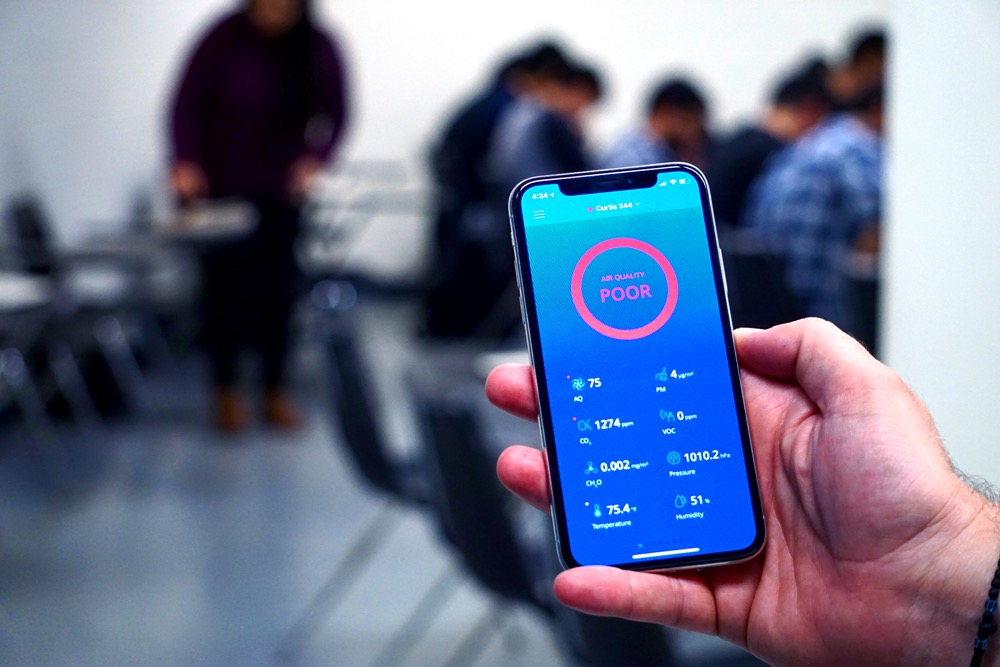For 2019, it’s time to look at the quality of the air we breathe – and do something about it, if needed.
One way is with cloud-connected Airthinx. It’s a device and app that monitor and deliver information about air quality to end-users in commercial, industrial and residential spaces.
“It brings a new dimension to health and wellness,” says Dr. Vasileios Nasis CEO of Netronix Group, from which Airthinx is a spinoff. “It measures the nine parameters of air quality that are what an industrial hygienist looks at.”
Among them are particulates, carbon dioxide, formaldehyde, poisonous gasses, temperature, humidity and air pressure. “When combined they can be very dangerous,” he says. “Temperature and humidity can mean mold – and temperature and gasses can mean fire.”
Airthinx is effective in any indoor environment, whether home, office, hospital or school. “It’s even being considered by major airlines,” he says. “Air quality on aircraft is crucial – pilots may fall asleep and passengers may get sick.”
In buildings, it’s a solution that doesn’t change the quality of air itself, but that monitors it and communicates with HVAC or management systems to improve the air we breathe.
“Instead of the typical thermostat, you can put in a smart thermostat and Airthinx can communicate with it and activate it or deactivate it – or with a humidifier, dehumidifier or purifier to change the air as needed,” he says. “It continually measures air quality and gives feedback and activates the unit to make the air quality the most comfortable and healthiest possible.”
It also can be provided by insurance companies to clients with asthma or other respiratory ailments, to improve the air quality in their homes. “It’s cheaper to provide them with Airthinx than to have them go to the E.R.,” he says.
Architects, too, are finding the new product useful, as they design homes that are more and more airtight. “It makes a difference, day and night, with good air circulation and reduced carbon dioxide,” he says
The device is simplicity itself when it comes to installation and use. Plug it in and a blue LED strip indicates good air quality. Green means moderate, and red means poor. An app links up to a website where trends can be monitored and data stored.
Pricing on the device runs $49 monthly for a two-year minimum lease, or $699 for an outright purchase.
For more, go here.
[slideshow id=1993]

